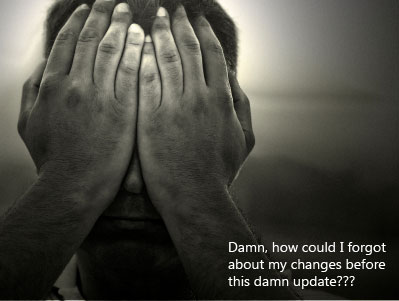Information Imbalance and Roach Motels
Last week this piece on TechCrunch about social CRM startup Nimble, caught my attention, as interest in business systems that can more effecitively connect with and leverage the social graphs of customers, prospects, and employees is certainly a hot topic for many organizations today. Nimble attempts to re-think traditional CRM systems, which have primarily functioned more as data stores and repositories of information rather than truly dynamic systems of engagement and added value by connecting contact, company, and deal information with external social networks, (LinkedIn, Facebook, Twitter, G+), as well as internal and enterprise sources.  Dead End
Dead End
The trouble with traditional CRM, and likely other slices of the enterprise technology stack, is that there often seems to be an imbalance, or at least a perceived one, in the information flow to and from these systems in the minds of those that the systems are ostensibly trying to serve. If you think about it, administrators, managers, and employees can pretty easily get the sense that they have to spend too much time feeding these beasts, without getting that much in return. A telling quote in the TechCrunch piece from Nimble's founder Jon Ferrara sums this feeling up well:
“CRM tools are not about communications,” he says. “It is a management tool, a way for managers to keep a hand around the neck of managers. CRM doesn’t tell you anything, you have to tell it everything.”
The quote is very instructive, and kind of reminds me of the old 'Roach Motel' line - 'roaches go in, but they don't come out.' Substitute roaches for data, and you are pretty much there.
Contrast that concept of an information imbalance with some recent ideas about the value derived from participation in social networks, where it has been posited that the average user or consumer of social information gets way more value out than they have to put back in. Some of that positive information imbalance on social networks like Facebook and Twitter can be attributed to the 'power users', the ones that feed the platforms with copious updates, tagged photos, 'likes', and re-tweets. While sometimes kind of annoying, they do have the effect of generating significant interaction, content, and perceived value for these networks. Ultimately, most network participants feel like they are getting more value from their participation than they have to contribute.
The net-net of this for folks that have to design, deploy, and convince sometimes less than excited users to actual engage with enterprise systems that perhaps they don't really feel that excited about? Think long and hard about how to tip the imbalance scales more in the direction of the everyday user. Think about ways the systems can tell the users something they might not already know, and present that information to them in way that is easily consumable. Recruit a few more 'over-sharers', I mean, 'power users' that understand the problems that the everyday users need to solve, and can help you architect your solutions so that they don't seem so needy.
There are lots of reasons why Facebook and the other social networks have proven to be so successful and popular, but the idea of 'I get out more that I put in' is probably the most important, and the one to think about as most of us try to create that same value and power inside our organizations.

 Steve
Steve